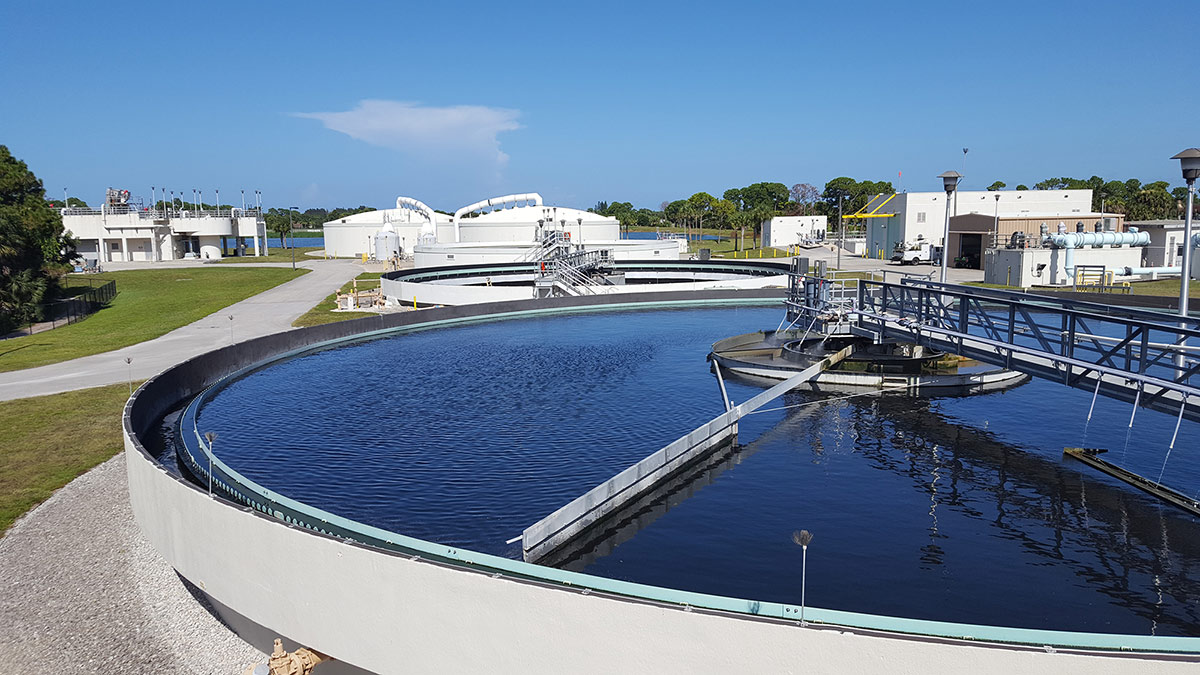Efficient Waste Water Treatment Solutions: Trick Approaches and Advantages
Efficient Waste Water Treatment Solutions: Trick Approaches and Advantages
Blog Article
Strategic Approaches to Enhance Waste Water Therapy Efficiency and Lessen Ecological Effect
In the world of waste water therapy, the quest for improved efficiency and reduced environmental impact is a continuous obstacle that requires tactical remedies. As culture grapples with the imperative to handle water resources sustainably, a nuanced technique comes to be essential. The combination of advanced treatment modern technologies, energy-efficient processes, source recovery techniques, improved nutrient elimination methods, and clever tracking and control systems stands for a multifaceted structure for resolving these pushing problems. What lies at the core of this complex web of strategies is the possible to reinvent the way we approach waste water therapy, not just as a procedure of disposal, yet as an important opportunity for technology and ecological stewardship.
Advanced Therapy Technologies
Sophisticated membrane purification systems have revolutionized sophisticated wastewater therapy processes, dramatically improving the removal of impurities. These innovative systems work forcibly water with a semi-permeable membrane layer, efficiently dividing contaminations from the water stream. The membrane's tiny pores catch contaminants such as microorganisms, viruses, and suspended solids, permitting only detoxified water to pass through. This innovation has actually shown to be very efficient in eliminating a variety of pollutants, consisting of drugs, heavy steels, and natural substances, which are frequently challenging to eliminate via standard therapy methods.
Moreover, membrane purification systems supply countless benefits over traditional treatment techniques. They need less space, produce higher-quality effluent, and are extra immune to changes in influent water high quality. Furthermore, these systems are extremely functional and can be conveniently incorporated right into existing therapy plants or used as standalone units for decentralized applications. As the demand for clean water continues to rise, the adoption of sophisticated membrane layer filtering technologies is vital to guarantee sustainable and reliable wastewater therapy methods.
Energy-Efficient Procedures
The combination of energy-efficient procedures in wastewater treatment systems is crucial for enhancing source utilization and lowering operational expenses. One key technique to enhancing power performance in wastewater treatment is the usage of innovative aeration systems, such as great bubble diffusers or surface aerators, which can enhance oxygen transfer efficiency and reduce energy intake.
Furthermore, enhancing procedure control and automation through making use of sophisticated sensing units and checking systems can improve overall energy efficiency by adjusting operations in real-time based upon actual need and problems. Implementing energy audits and consistently monitoring power efficiency signs are necessary methods to determine areas for improvement and track energy-saving campaigns effectively. On the whole, the fostering of energy-efficient processes in wastewater treatment not only profits the atmosphere yet additionally contributes to lasting cost financial savings and functional sustainability.
Resource Healing Techniques
With an emphasis on enhancing resource application and sustainability in wastewater therapy systems, the application of resource recuperation approaches emerges as a pivotal facet in enhancing operational performance. Source healing techniques in wastewater treatment involve the recognition and extraction of valuable sources from the waste stream, thus transforming what was when considered waste right into a useful asset. By carrying out resource recuperation techniques such as nutrient elimination and recovery, power generation from raw material, and the production of multiple-use water, wastewater therapy plants can lessen environmental effect while making best use of effectiveness.

Boosted Nutrient Removal Techniques
Carrying out innovative nutrient removal strategies is vital for maximizing the effectiveness of wastewater treatment systems. One of the key strategies utilized for enhanced nutrient elimination is the process of biological nutrient removal (BNR), which entails the elimination of nitrogen and phosphorus with organic processes.

Along with BNR, progressed therapy approaches such as membrane layer bioreactors (MBRs) and constructed wetlands can also be utilized to boost nutrient elimination effectiveness. MBRs make use of membrane layers to achieve high-grade effluent requirements by properly removing nutrients and suspended solids. Built marshes mimic natural marsh procedures to get rid of nutrients through plant uptake, microbial activity, and sedimentation. By integrating these advanced nutrient removal methods right into wastewater treatment municipalities, systems and markets can effectively lower nutrient pollution and shield the environment.
Smart Tracking and Control Solution
Utilizing advanced technology, the assimilation of clever surveillance and control systems reinvents the functional effectiveness of wastewater treatment facilities. These systems include sophisticated sensing units and information analytics to continually keep an eye on crucial specifications such as pH degrees, turbidity, dissolved oxygen, and flow prices in real-time. By gathering and assessing this data, drivers can obtain important understandings right into the efficiency of the therapy procedures, allowing proactive modifications to maximize therapy effectiveness.
Smart monitoring and control systems also sustain remote monitoring abilities, allowing drivers to gain access to real-time information and control features from off-site areas. This remote availability improves operational adaptability and responsiveness, making it possible for quick treatments in instance of system malfunctions or variations in influent high quality. Moreover, the anticipating upkeep capacities of these systems help protect against tools failures and minimize downtime, ultimately improving the overall dependability of wastewater therapy operations (Waste Water Treatment).
Conclusion
In conclusion, critical approaches such as innovative treatment technologies, energy-efficient procedures, source healing approaches, enhanced nutrient elimination visit their website techniques, and smart surveillance and control systems play an important role in boosting wastewater therapy performance and reducing ecological influence. By carrying out these techniques, wastewater treatment plants can improve their total performance, decrease energy intake, recover beneficial resources, and make certain compliance with environmental policies. These strategies are vital for sustainable and effective wastewater monitoring practices.

In conclusion, tactical approaches such as advanced therapy innovations, energy-efficient procedures, resource healing strategies, improved nutrient elimination techniques, and wise surveillance and control systems play a vital role in improving wastewater therapy efficiency and reducing ecological impact.
Report this page